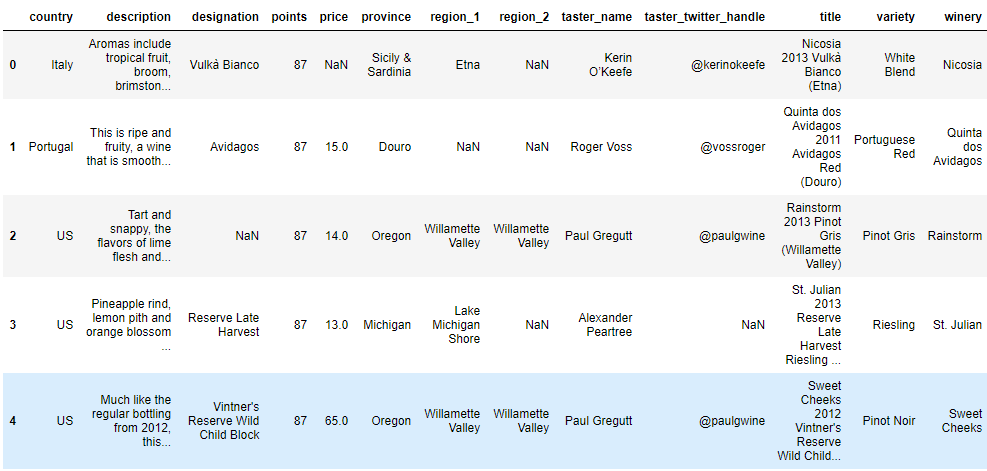Using SQL with Pandas
Introduction
Consider the structure of a Pandas DataFrame.
Now, let's consider the structure of a table from a SQL database.
You've probably noticed by now that they're essentially the same--a table of values, with each row having a unique index and each column having a unique name. This allows us to quickly and easily access information when using SQL. In this section, we'll learn how we can use SQL-style queries to query pandas DataFrames!
Objectives
You will be able to:
- Compare accessing data in a DataFrame using query methods and conditional logic
- Query DataFrames with SQL using the pandasql library
Using .query()
Pandas DataFrames come with a built-in query method, which allows you to get information from DataFrames quickly without using the cumbersome slicing syntax.
See the following examples:
# Getting Data using slicing syntax
foo_df = bar_df[bar_df[bar_df['Col_1'] > bar_df['Col_2']]]
# Using The query method
foo_df = bar_df.query("Col_1 > Col_2")
# These two lines are equivalent!Note that if you want to use and and or statements with the .query() method, you'll need to use "&" and "|" instead.
foo_df = bar_df.query("Col_1 > Col_2 & Col_2 <= Col_3")Using SQL syntax with pandasql
Since SQL is such a powerful, comfortable tool for Data Scientists, some people had the bright idea of creating a library that lets users query DataFrames using SQL-style syntax. This library is called pandasql.
We can install pandasql using the bash command pip install pandasql.
Importing pandasql
In order to use pandasql, we need to start by importing a sqldf object from pandasql
from pandasql import sqldfNext, it's helpful to write a lambda function that will make it quicker and easier to write queries. Normally, you would have to pass in the global variables every time we use an object. In order to avoid doing this every time, here's how to write a lambda that does this for you:
pysqldf = lambda q: sqldf(q, globals())Now, when you pass a query into pysqldf, the lambda will also pass along the globals, saving you that repetitive task.
Writing Queries
To write a query, you just format it as a multi-line string!
q = """SELECT
m.date, m.beef, b.births
FROM
meats m
INNER JOIN
births b
ON m.date = b.date;"""In order to query DataFrames, you can just pass in the query string you've created to our sqldf object that you stored in pysqldf. This will return a DataFrame.
results = pysqldf(q)Summary
These advanced methods for querying DataFrames can make your life a lot easier by simplifying the syntax and allowing us to make use of SQL--use them to save yourself time and give keep your SQL skills strong!

